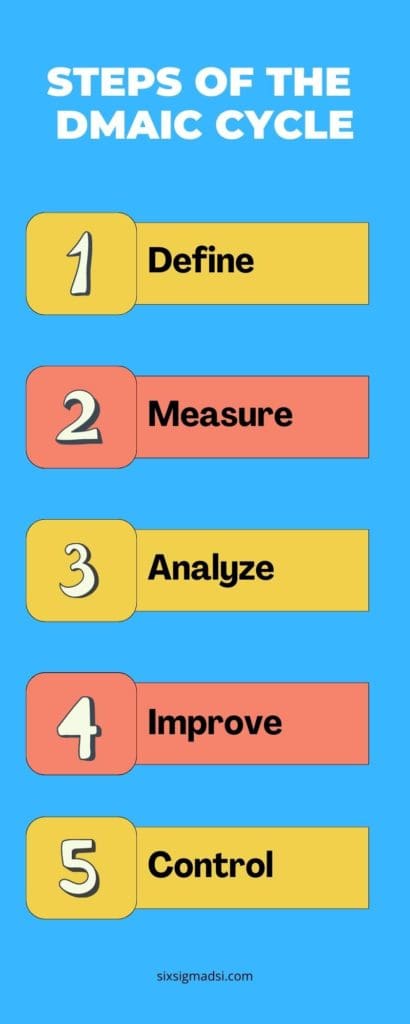Table of Contents:
Kaizen and Value Stream Mapping (VSM)
One of the most important skills in Six Sigma practice is being able to identify areas where organizations create value. This allows for efficient processes and streamlined operations. This applies regardless of whether the process is used for manufacturing products or processing transactions. Six Sigma Kaizen Value Stream Mapping (VSM) symbols allow an organization to see value flowing from one area to the next, rather than as a series or isolated processes. This visualization is crucial for Lean Six Sigma deployment.
Kaizen Valu Stream Mapping is an event lasting two to five days depending on the size and scope. This event focuses on mapping the customer’s process from the time they place their order or request to delivery. Customer lead time is the time taken from request to fulfillment. The team is often shocked at how long it takes to complete the lead-time process. The event’s purpose is to create the ideal, current, and future state maps for the value stream. The team captures waste and identifies the obstacles that prevent the company from reaching the desired future state.
Preparing for A Value Stream Mapping event
The event will require a lot of preparation, including data collection and input from employees. It is essential that the project team has discussions with management to determine what information is needed to prepare for the event. As a guide to the various processes in the value stream, it is important to choose a preliminary process. The process that is selected should be one that is fairly representative-neither the simplest nor the most complex.
While value stream mapping can be used in individual thinking, it is most effective when done in a group setting. It is important to choose a facilitator for a group. Kaizen events facilitators are essential because they lead sessions, keep them on track and challenge the group’s conventional wisdom. Facilitators can help teams focus on providing process knowledge while leaving the charting and mapping to an experienced facilitator.

Charting the Current State Value Stream Map
The Gemba (go to see) walk through the workplace is a prerequisite for six sigma value stream mapping events. This gives the team a sense of the process and allows them to identify any potential problems. The process can also be viewed virtually for office processes. Facilitators don’t necessarily have to know all details about the process at this stage; they just need a brief overview of the various types of processes and their physical layout.
Once the state map is completed, the facilitator guides the group in identifying potential and wastes. The facilitator then leads the group through the steps to create an ideal state map.
- The session begins with standard introductions followed by the stated objectives.
- The team discusses the services or products and then agrees to concentrate on one.
- The team members give a brief description of the process to provide an overview.
- Documentation and investigation of various events and steps that are interrelated within the value stream.
- The creation of an ideal state map that highlights only those processes that add value. This allows everyone to see their potential and helps them reach a practical compromise.
The two most important methods to streamline processes in the value stream are the “Columbo approach”, and brainstorming sessions. In the TV series detective, the “Columbo approach” involves asking questions that stimulate thinking, and brainstorming increases creativity. The facilitator will usually combine both, and direct the group’s attention to the areas that offer the greatest potential for improvement. These opportunities require sharp instincts and a lot of experience.
A future state map, which is based on the differences between the ideal and current states, is then created. The resulting Future State Value Stream Map includes opportunities, assignees, and milestones that should help the process move towards its future state. Many of these improvements will lead to detailed Kaizen events that can be completed within the next few months.
After identifying the potential improvements, the team might seek consensus on additional information that would allow improvements to begin, such as what steps could be taken immediately and what can be put off until later. This is the Action Plan. It can be developed during additional meetings, or by another implementation team.
A Kaizen event is a structured problem-solving approach that contributes to purposeful continuous improvement within any organization. DMAIC is a problem-solving approach to facilitate continuous improvement, as shown in the following figure.
The primary tasks of the various steps of the DMAIC cycle are:
- Define:
- Describe symptoms and define the problem.
- Ensure stakeholders agree on the scope of the problem.
- Measure:
- Collect data and facts about the problem.
- Validate the data.
- Analyze:
- Analyze and structure the data.
- Define and test hypotheses regarding the problem.
- Improve:
- Define alternative solutions.
- Decide on and implement improvements.
- Control:
- Anchor the change in the organization.
- Share lessons learned.

You cannot solve a problem unless you first Define it. Defining a problem includes describing the current situation and why it is not acceptable. Therefore, you should ensure the onboard stakeholders agree with the statement defining the problem. You should then Measure the variables that can influence the problem by collecting the related data and facts. It is vital to ensure that the data is correct. The next step is to analyze the gathered data. Such an analysis includes structuring and visualizing the data into a format that will allow you to understand what the data is all about and convert it into information. You can then use the information to test hypotheses regarding the problem. Having understood the dynamics of the problem, you can now move on to the Improve phase, which defines potential solutions to the problem. Once a number of solutions are generated, decide the improvement to implement. After ensuring whether a particular solution works, embed the solution into the organization’s way of working in the Control phase, and share any lessons learned.
Conclusion
The Six Sigma Value Stream Mapping Kaizen event takes place over several days. The following activities are carried out by a team of representatives from the selected product or service.
- Gemba Walk (go to see)
- Current State Map (with a timeline viewed from the customer’s perspective)
- Opportunities and wastes
- Map of the Ideal State
- Future State Map
- Action Plan for Future State (Gap between Current and Ideal)



















